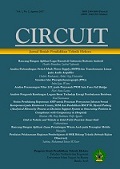Evaluation of Project-Based Learning at a Polytechnic in Malaysia: an Input Aspect Evaluation Research
DOI:
https://doi.org/10.22373/crc.v2i1.759Keywords:
Project-Based Learning, Input AspectAbstract
The purpose of the study was to evaluate the effectiveness of Project-Based Learning in the Mechanical Engineering Department at the Polytechnic in Malaysia. This study was designed with Context, Input, Process and Product (CIPP) model. Project-Based Learning is a different approach than the traditional learning in the sense that it is a student-centered learning approach based on the principles of constructivism. However, this present paper focused on the input aspect with comparing students’ and supervisor’ perspective. The input dimension assesses the module and supervisor’s readiness. This study involved a random sample of 118 students and 43 supervisors in the Mechanical Engineering Department in Polytechnic Kota Bharu Malaysia. The instrument used in this study were a set of questionnaire. The study found that both the students and supervisors agreed that Project-Based Learning approach is appropriate for the final project course J5012. In addition, both groups of respondents believed that the supervisors possesed adequate technical knowledge and implemented supervisory duties effectively. Nevertheless, students perceived the module content was hard to understand.Downloads
Published
2016-07-01
Issue
Section
Articles
License
Authors who publish in CIRCUIT: Jurnal Ilmiah Pendidikan Teknik Elektro agree to the following terms:
- Authors retain copyright and grant the journal right of first publication with the work licensed under a Creative Commons Attribution-ShareAlike 4.0 International License (CC BY-SA 4.0) that allows others to share and adapt the work with an acknowledgement of the authorship and initial publication in this journal
- Authors are able to enter into separate, additional contractual arrangements for the non-exclusive distribution of the journal's published version of the work (e.g., post it to an institutional repository or publish it in a book), with an acknowledgment of its initial publication in this journal.
- Authors are permitted and encouraged to post their work online (e.g., in institutional repositories or on their website) prior to and during the submission process, as it can lead to productive exchanges, as well as earlier and greater citation of published work. (See The Effect of Open Acces)

